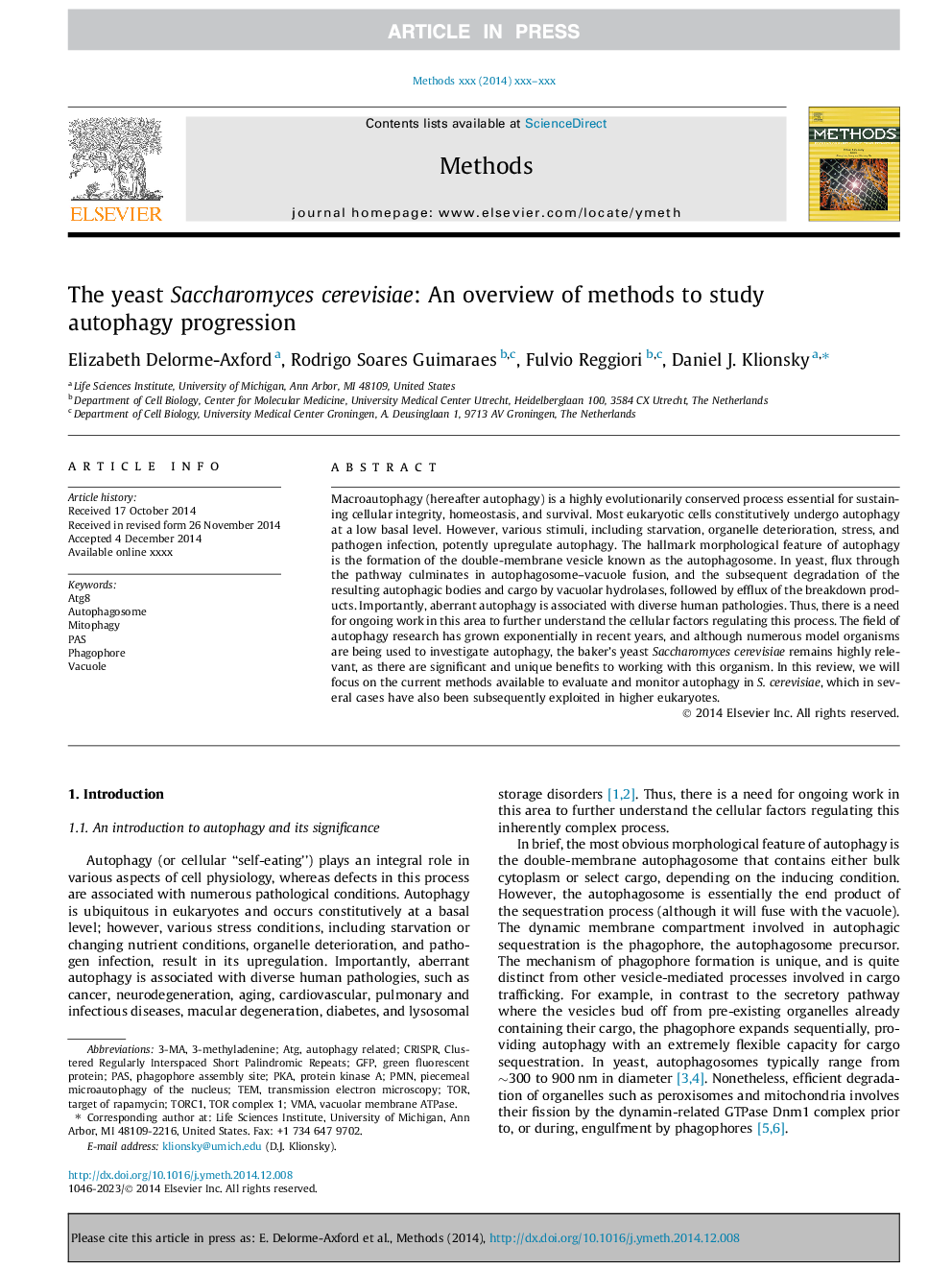| کد مقاله | کد نشریه | سال انتشار | مقاله انگلیسی | نسخه تمام متن |
|---|---|---|---|---|
| 8340655 | 1541249 | 2015 | 10 صفحه PDF | دانلود رایگان |
عنوان انگلیسی مقاله ISI
The yeast Saccharomyces cerevisiae: An overview of methods to study autophagy progression
دانلود مقاله + سفارش ترجمه
دانلود مقاله ISI انگلیسی
رایگان برای ایرانیان
کلمات کلیدی
ATGpiecemeal microautophagy of the nucleusPhagophoreTORC1phagophore assembly siteAutophagosomePMNAtg83-MApKaGFPTORVMACRISPR3-methyladenine - 3-متیل آدنینautophagy related - autophagy مرتبطTem - این استclustered regularly interspaced short palindromic repeats - به طور منظم تکرار پینگندرومی کوتاه مدت میان دو طرف تقسیم می شودVacuole - خلاص شدن از شرMitophagy - میتوفاژیTransmission electron microscopy - میکروسکوپ الکترونی عبوریPAS - نهtarget of rapamycin - هدف از رپامایسینgreen fluorescent protein - پروتئین فلورسنت سبزprotein kinase A - پروتئین کیناز A
موضوعات مرتبط
علوم زیستی و بیوفناوری
بیوشیمی، ژنتیک و زیست شناسی مولکولی
زیست شیمی
پیش نمایش صفحه اول مقاله

چکیده انگلیسی
Macroautophagy (hereafter autophagy) is a highly evolutionarily conserved process essential for sustaining cellular integrity, homeostasis, and survival. Most eukaryotic cells constitutively undergo autophagy at a low basal level. However, various stimuli, including starvation, organelle deterioration, stress, and pathogen infection, potently upregulate autophagy. The hallmark morphological feature of autophagy is the formation of the double-membrane vesicle known as the autophagosome. In yeast, flux through the pathway culminates in autophagosome-vacuole fusion, and the subsequent degradation of the resulting autophagic bodies and cargo by vacuolar hydrolases, followed by efflux of the breakdown products. Importantly, aberrant autophagy is associated with diverse human pathologies. Thus, there is a need for ongoing work in this area to further understand the cellular factors regulating this process. The field of autophagy research has grown exponentially in recent years, and although numerous model organisms are being used to investigate autophagy, the baker's yeast Saccharomyces cerevisiae remains highly relevant, as there are significant and unique benefits to working with this organism. In this review, we will focus on the current methods available to evaluate and monitor autophagy in S. cerevisiae, which in several cases have also been subsequently exploited in higher eukaryotes.
ناشر
Database: Elsevier - ScienceDirect (ساینس دایرکت)
Journal: Methods - Volume 75, 15 March 2015, Pages 3-12
Journal: Methods - Volume 75, 15 March 2015, Pages 3-12
نویسندگان
Elizabeth Delorme-Axford, Rodrigo Soares Guimaraes, Fulvio Reggiori, Daniel J. Klionsky,